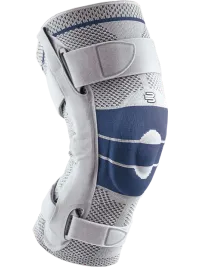Improvements in knee replacement procedures mean faster recovery and better results.
by Julia Baker
APRIL 29, 2020 - In 2005, Gerald Osborne was a competitive water skier, winning top placement in regional categories for his skills on the water. Accomplishing these feats at 55 years old was already impressive, even more so considering the torn cartilage resulting from osteoarthritis in the knee.
"For 12 years, I put up with a lot of pain in my knee," says Osborne. "When I skied, it was like somebody was stabbing a knife in me every time I went back and forth behind the boat."
Osborne says he developed a high tolerance for the pain during ski sessions, but at bedtime, he could barely stand the pain, and he had to sleep with a pillow between his legs. "I called going to bed 'going to chase the pillow,'" he says. "I couldn't stand for anything to touch the inside of my leg."
With encouragement from his wife, Osborne had his knee examined by an orthopedic surgeon in Memphis, who conducted a knee arthroscopy — a procedure that inserts a tiny camera, called an arthroscope, into the joint to diagnose the problem and repair ligaments.
Osborne returned to skiing after that, but he still had pain. In 2003, he decided he'd ask another doctor, Dr. Owen Tabor of OrthoSouth, for a second look. After a second arthroscopy Tabor told Osborne that he would need a partial knee replacement, or joint resurfacing, due to a hole in the cartilage causing bone-to-bone damage.

